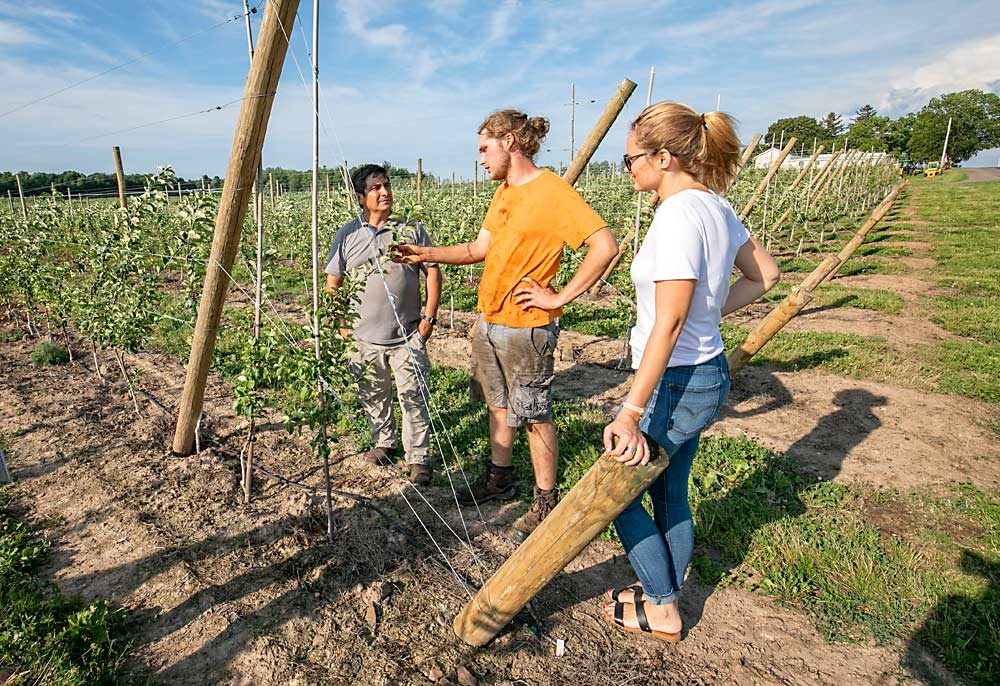
For years, Robert Abendroth hoped to buy his own orchards as he managed high-density apple orchards in Germany, but it was nearly impossible to buy land there. So, he and his family set out on a global tour to find their future farm, eventually settling on a 130-acre tree fruit farm in upstate New York.
“We bought this place five years ago, sight unseen,” Robert said of the Wolcott-area farm now known as Abendroth’s Apple Ridge Orchards. It felt like a gamble, but his banker insisted that it was a good move and they weren’t in the business of making risky loans, Robert said when he gave Good Fruit Grower a tour in July.
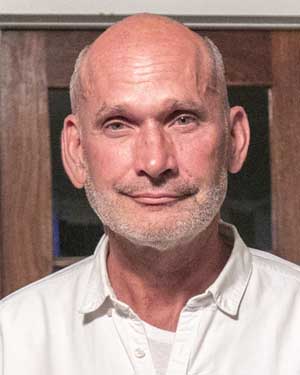
Now, instead of farming 20 acres of ultramodern, high-density apples, he’s got older blocks of apples, sweet cherries, tart cherries, peaches and pears — and two of his four children, Alicia and Alec, farming with him. Together, they’ve since bought another 160-acre apple farm and begun the work of modernizing and finding new direct market opportunities.
New York, it turns out, offers great opportunities thanks to urbanites willing to pay extra for locally grown produce — even older apple varieties that don’t have a fresh, wholesale market. Direct market relationships with farm markets and stores, developed to find buyers for their cherries and peaches, have resulted in new apple opportunities, Alicia said.
“The margins are so much better when you have that direct market,” she said. “Some of our New York City buyers have actually put out our logo and said ‘local,’ so that’s been cool to create this brand.”
It’s hard work to maintain all those buyer relationships in a busy summer fruit season, although most of the farm remains processing apples, for now. “We’re happy to be processing growers right now, while the fresh market is shaking up. It’s a scary time to plant for fresh,” she said.
Apple orchard renovations
At the family’s second farm, located in Sodus, a second-leaf block of high-density Royal Red Honeycrisp and EverCrisp, planted at 10.5-foot by 2-foot spacing, represents what the family is working toward.
“We call this our block of the future,” Alicia said. They expect at least 60 bins per acre once it reaches full production.
She and Alec work closely with horticulturist Marcelo Vasquez, a Chilean agricultural engineer who joined the Abendroths as farm manager in 2018. This region of New York is a lot like Southern Chile, he said, although the pest pressure is higher. Vasquez explained that he opted to let the young trees hang some fruit in the second leaf to let the weight of the fruit train the branches.
The young block is a mix of commercial nursery trees (Honeycrisp) and trees grown in their own nursery (EverCrisp) “because we couldn’t get trees from Washington fast enough,” Alicia said.
The homegrown trees lagged behind their commercial counterparts a bit, in part because they decided to test out a two-leader system. The “jury is still out” on that approach due to the extra time it takes to grow the trees, she said. Producing their own nursery trees is also time-consuming, but they’ve gotten better at it, especially with insight from Vasquez. “If we keep doing it right, we’re going to save money,” Alicia said. Fuji, Honeycrisp and SnapDragon are planned for future planting.
That block of the future is surrounded by the blocks of the past — Rome, Golden Delicious, Idared and others planted at 8-by-20 — but the Abendroths decided to experiment with grafting some of them to modern varieties and densities.
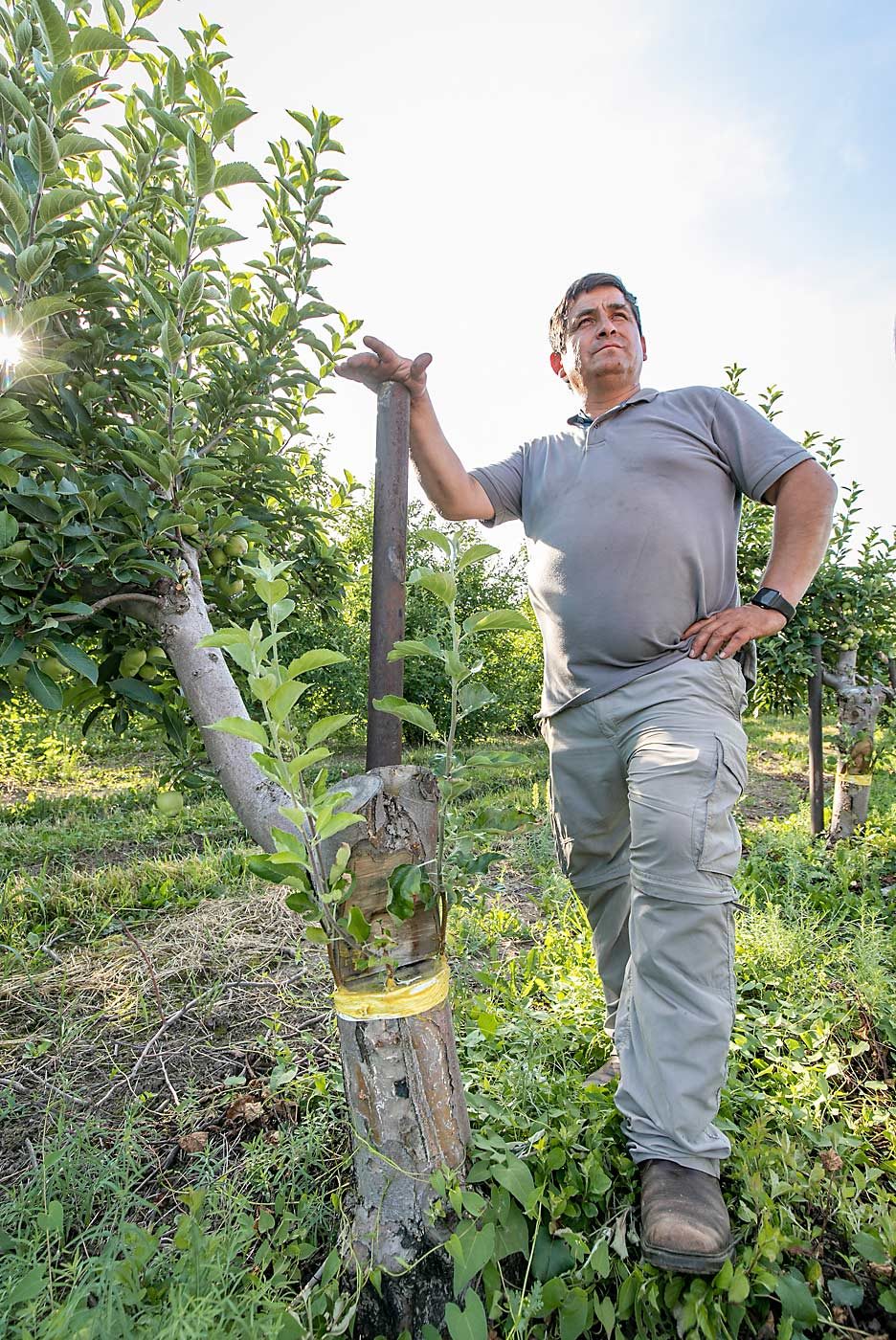
In one former Red Delicious block, massive trunks have been top-worked with three sticks of SnapDragon that were dwarfed by a nurse limb so enormous they plan to remove it over two years as the new leaders grow enough to handle the horsepower from the standard-sized root systems.
“I’ve seen this approach grow perfect Fujis in Chile,” Vasquez said. “You do this when you don’t want to wait to get into production.”
Cornell Cooperative Extension specialist Mario Miranda Sazo — who has been working on the approach of grafting over medium-density orchards into multileader systems to increase density — said he wouldn’t recommend the approach for such low-density plantings because it’s not an efficient use of space.
But he praised the hard work the Abendroth family has put in over the past five years to give the old farms a new future, along with the fresh energy and ideas.
Being new to the area means feeling less bound by tradition and more willing to experiment, Alicia said.
“It’s not the same farm it was when we got it, that’s for sure,” Alicia said. “Once the apple market figures itself out, we can make our next moves.”
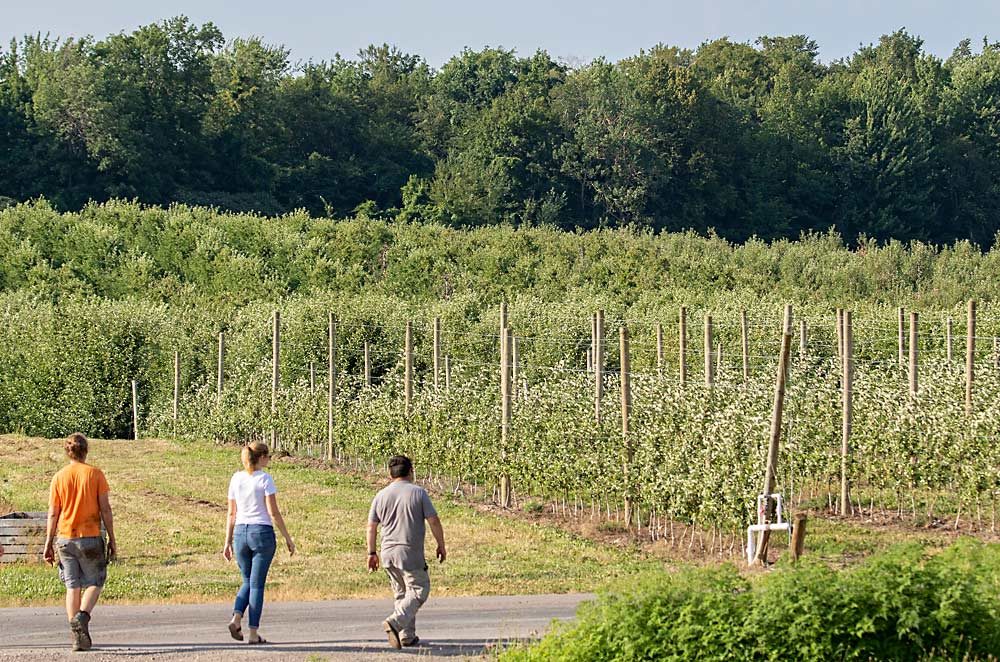
Working with family
The family works well together because each member has a niche in the business.
Mechanically minded Alec keeps the old equipment running, and his fluent Spanish, honed during an internship in Chile, makes him the point person for working with Vasquez and the crew. Outgoing Alicia, who studied horticulture at Cornell, has taken on more of the marketing and market development work, along with involvement in many industry organizations.
Robert brings decades of experience and farm business savvy, but he’s encouraging his children to gain independence.
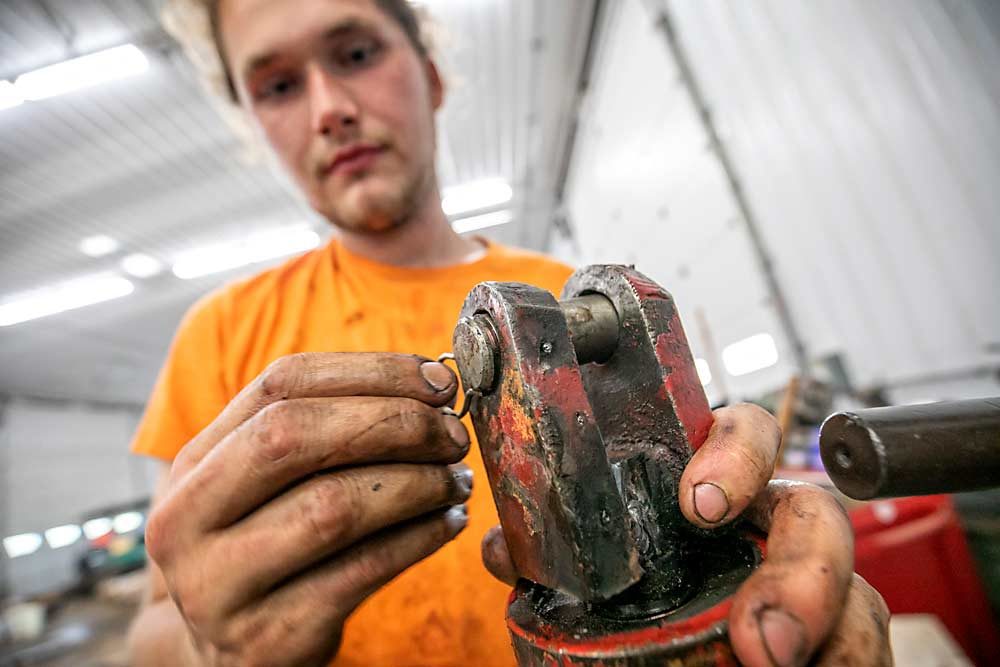
“To anyone who works with their kids: You have to get out of their way,” Robert said. It’s hard, but you have to let them make mistakes. “I let my daughter thin that one and she didn’t thin it that well. But that’s OK. She’s learning and they have to make their own decisions to learn.”
Alicia agreed that her father’s approach means she and Alec have taken on a lot more responsibility than many young adults who farm with their parents. “We kids have become very self-sufficient,” she said. “I feel very lucky to have him as a mentor.”
They’ve all been learning together — from mistakes and successes — the past five years as they put down roots in New York.
“We made the decision to do this as a family and it’s been a little crazy at times, but there’s nothing I’d rather be doing,” Robert said. •
—by Kate Prengaman






Leave A Comment